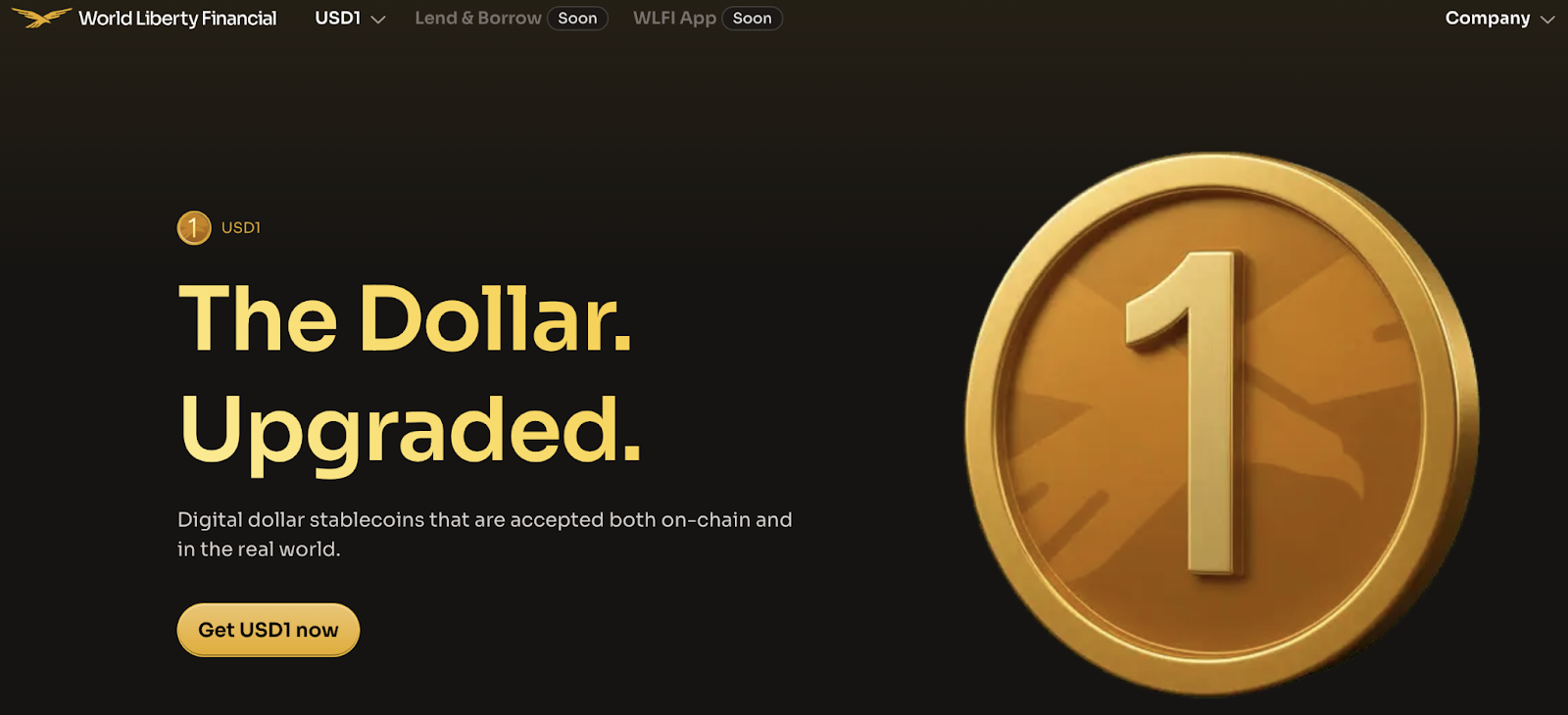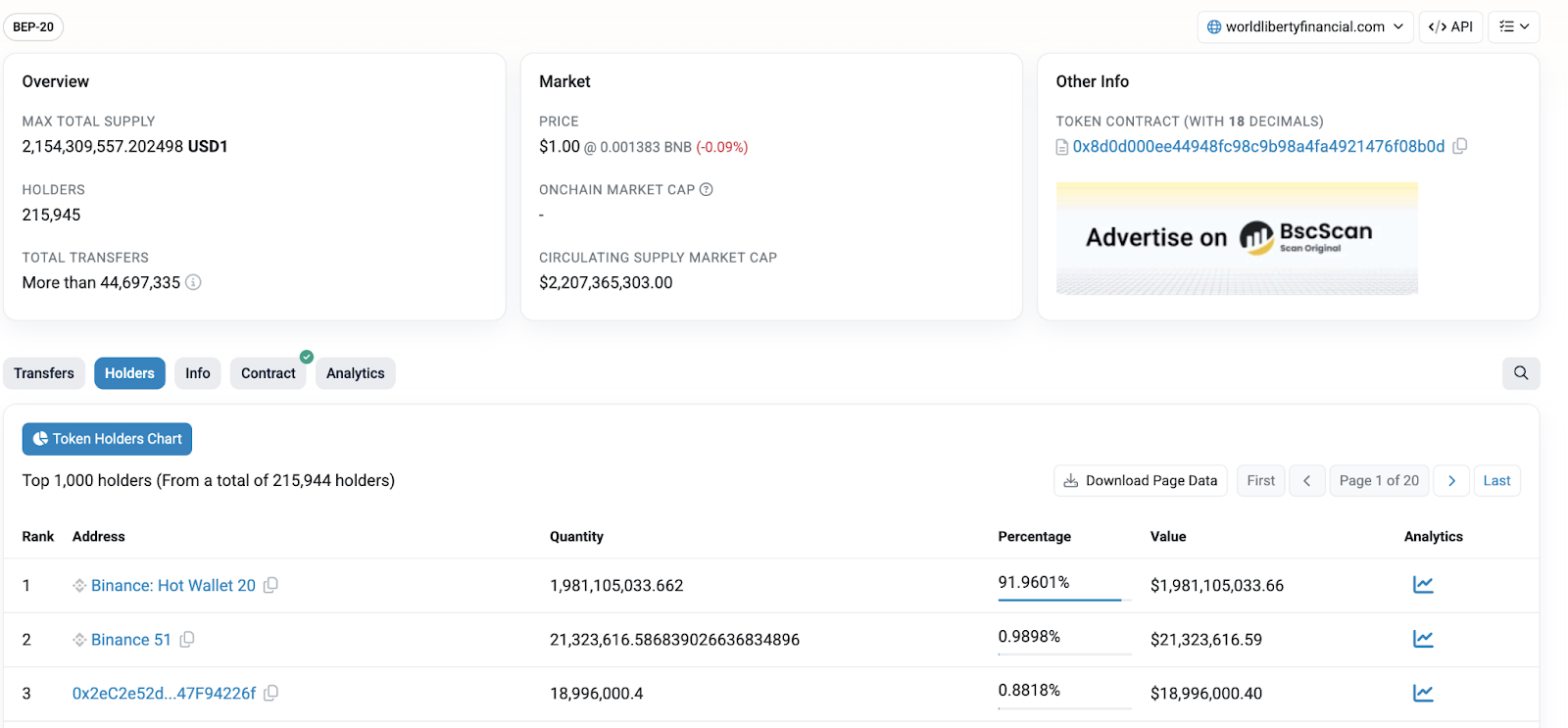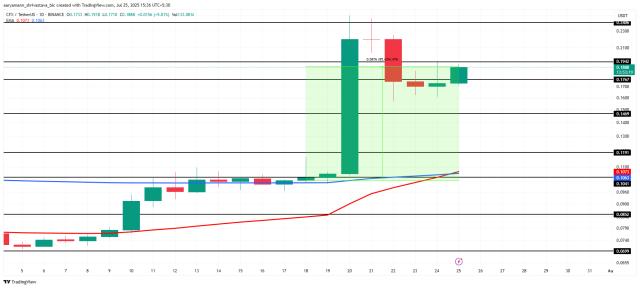The following content is released by JuCoin Labs Research Institute: Recently, the crypto project World Liberty Financial (WLFI), endorsed by the Trump family, has become the focus of the crypto market. Since its launch, the WLFI token has attracted significant attention with its "political halo", but is also accompanied by massive capital operations and non-negligible policy risks. Currently, the WLFI token has not been officially launched. On July 16, the community passed the "token circulation" proposal with a high support rate of 99.94%, meaning WLFI will officially transform from a governance token to a freely tradable asset. The underlying fund structure, ecosystem construction, and the stability of USD1 stablecoin are becoming the core factors for assessing the project's risks and investment value.
I. A Trump Family Project Centered on Stablecoin USD1
World Liberty Financial (WLFI) is a crypto financial project directly participated and led by the Trump family of the current US president. Its core product is the US dollar stablecoin USD1. USD1 is collateralized 1:1 with US dollar cash and US Treasury bonds, positioned as a compliant stablecoin, and attempts to introduce traditional political and business networks into the crypto financial field.
WLFI not only plans to build stablecoin and lending businesses but is also actively exploring multiple product lines such as on-chain payments and DeFi Apps, presenting a multi-line strategy of US dollar stablecoin, on-chain lending, and payment networks. However, currently, USD1 stablecoin remains its only substantive product, with other business segments still in the planning stage.
WLFI's project feature lies in the Trump family's high exposure and political influence, combined with on-chain US dollar stablecoin business, creating an image of a politically and commercially linked compliant stablecoin project different from market leaders like Circle and Tether.

II. A Family Capital Operation Team with Political and Business Integration
The core driving force behind WLFI is the Trump family itself. According to early information disclosed on the official website, the co-founding team includes Donald Trump Jr., Eric Trump, and Barron Trump, with Trump himself appearing as an "honorary co-founder". Additionally, the WLFI team structure integrates diverse backgrounds from real estate, diplomacy, and the crypto industry. New York real estate tycoon Steven Witkoff is listed as an "honorary co-founder", with his family members Zach Witkoff and Alex Witkoff participating as co-founders, primarily responsible for expanding funds and business in the Middle East. Notably, the public roles of Trump family members in the WLFI team have undergone multiple adjustments, such as Trump previously being listed as a "co-founder" and later changed to "honorary co-founder". Currently, WLFI no longer displays team member information on its website, focusing instead on its US dollar stablecoin USD1.
After USD1's launch, WLFI's capital and resource network further expanded, attracting deep involvement from TRON founder Justin Sun and Binance founder CZ. Justin Sun joined as an "advisor" and "largest investor", providing resource and policy influence support for WLFI; CZ offers traffic entry and user base for USD1 and WLFI through the BNB Chain ecosystem and Binance platform. On-chain data shows that the Trump family's shareholding in the WLFI project has dropped from initially 75% to about 40%, with some shares seemingly transferred to Justin Sun, DWF Labs, and the Aqua 1 Foundation, which announced a $100 million investment. It is worth being cautious that the Aqua 1 background is questionable. Although the fund claims to be from the UAE, there are indications of potential links with Web3port, which is suspected of market manipulation, and its fund transfer path is not transparent, raising market doubts about WLFI's fund structure and capital safety. In response, the Aqua 1 Foundation stated that the project is operated by an independent team, and its founder Dave Lee has no equity or financial connection with Web3port, currently collaborating with Middle Eastern institutions.
III. WLFI's Distribution and Unlocking Concerns
WLFI's governance token total supply is 100 billion, with 35% used for token sales, but currently only 25% of the public offering is completed, and the destination of the remaining 10% remains undisclosed. The sold public offering tokens have an expected 12-month lock-up period, and currently, both public and non-public portions are non-transferable. It is worth being cautious that the specific allocation plan, unlocking conditions, and time schedule for the non-public portion have never been disclosed to the market, presenting significant uncertainty. If the plan is not clearly disclosed before unlocking and not gone through community governance procedures, there is a risk of early unlocking and concentrated selling. Previously, WLFI existed only as a governance token without dividend or equity rights, with its value entirely dependent on platform governance participation. On July 16, the community approved a proposal to convert WLFI into a tradable asset, officially opening its circulation path.
In terms of token actual control, WLFI's operational structure is equally complex. The project's official registered entity is DT Marks DEFI LLC, dominated and controlled by the Trump family, with Trump himself indirectly holding token equity through a trust structure, with a holding of approximately 1.575 billion tokens, about 15.75% of the total token supply. Public information shows that by July 2025, the Trump family has realized approximately $500 million through token subscription, dividends, and related business channels. This figure has drawn external attention to the "family capital" cash-out path and has been questioned by policymakers and market participants for serious conflicts of interest and potential manipulation. After WLFI becomes a circulating asset, these risks may be further amplified.
IV. Capital Structure with Middle Eastern Funds and Centralized Platform Endorsement
The WLFI project demonstrates a clear "political and business capital and Middle Eastern funds" dual mode in its capital structure. In May 2025, Abu Dhabi's National Investment Fund MGX invested $2 billion in Binance and designated USD1 stablecoin as the payment medium, which became the core driver for USD1's rapid issuance expansion. This transaction not only brought massive capital inflow to USD1 but also made Middle Eastern capital an important support force behind WLFI.
Besides Middle Eastern funds, WLFI's deep binding with the Binance ecosystem is also noteworthy. Currently, 92.88% of USD1's total issuance is stored in two Binance custody addresses, with Binance effectively becoming an implicit endorser of USD1 in terms of funds. From an ecosystem cooperation perspective, WLFI is focusing on deploying Ethereum and BNB Chain, two mainstream ecosystems, and establishing partnerships with on-chain projects like Aave and Lista, attempting to expand USD1 and WLFI's application foundation in DeFi scenarios.
WLFI's current capital operation logic has deviated from traditional VC financing and retail fundraising routes, instead constructing a highly politicized and platform-based capital model through deep cooperation with Middle Eastern sovereign capital and centralized exchanges. This special fund structure provides resource advantages for the project while also planting hidden dangers of excessive centralized capital concentration and operational risks.
V. Business Data - USD1's Centralization Limitations and "Scale-based" Growth
Currently, USD1 presents a typical broker custody structure on-chain, rather than a decentralized circulation stablecoin form. Its real usage demand and decentralized ecosystem expansion are still in the early stages, more dependent on fund custody and bulk transaction channels. USD1 is mainly distributed across BNB Chain, Ethereum, and TRON networks, but its scale growth and asset distribution show extremely high centralization characteristics, with specific business data as follows:
- USD1 On-chain Circulation Data:
- Total Circulation: Approximately $2.2 billion.
- BNB Chain Proportion: 97.9% (approximately $2.154 billion).
- Ethereum Proportion: Approximately $48 million.
- Tron Proportion: Negligible, almost insignificant.
- Custody Concentration: 92.88% of USD1 assets are concentrated in two custody addresses of Binance, with $1.9 billion locked in Binance's main address (0xF977814e90dA44bFA03b6295A0616a897441aceC).
- On-chain Address Data:
- Holding Addresses on BNB Chain: 21,590.
- Holding Addresses on Ethereum: 64,000.
- Tron: Only 466 addresses.
- Business Characteristics:
- Growth Model: Growth depends on "capital channel" events (such as MGX's stake in Binance), not driven by natural transaction demand or DeFi application scenarios.
- Highly Centralized: Currently, Binance actually controls 97.9% of USD1 circulating assets, with a lack of diversified token holding structure and an underdeveloped decentralized ecosystem.

VI. Summary
World Liberty Financial's core competitiveness is not technological innovation or product differentiation, but the political endorsement of the Trump family and the capital channel resources they control. The project's main product, USD1, rapidly expands its scale through specific capital cooperation models, but is essentially a centralized, fund management-type stablecoin with weak decentralized financial attributes.
At the same time, the governance token WLFI lacks a direct binding relationship with actual business, becoming an important potential risk for the project. Once the Trump family stops brand endorsement or experiences an interest transfer, the WLFI ecosystem may quickly lose its core support and market attention.
WLFI's growth path relies on family political capital, centralized platform cooperation, and blood transfusion-style promotion from Middle Eastern funds, presenting a clear "policy finance" characteristic. Its operational logic is closer to a closed-type capital experiment rather than an open crypto financial ecosystem. In the short term, WLFI has a certain market attention due to its topicality; however, from a medium to long-term perspective, the project's governance structure risks, token-business decoupling, and highly centralized capital architecture may become unavoidable structural challenges for its sustainable development!





